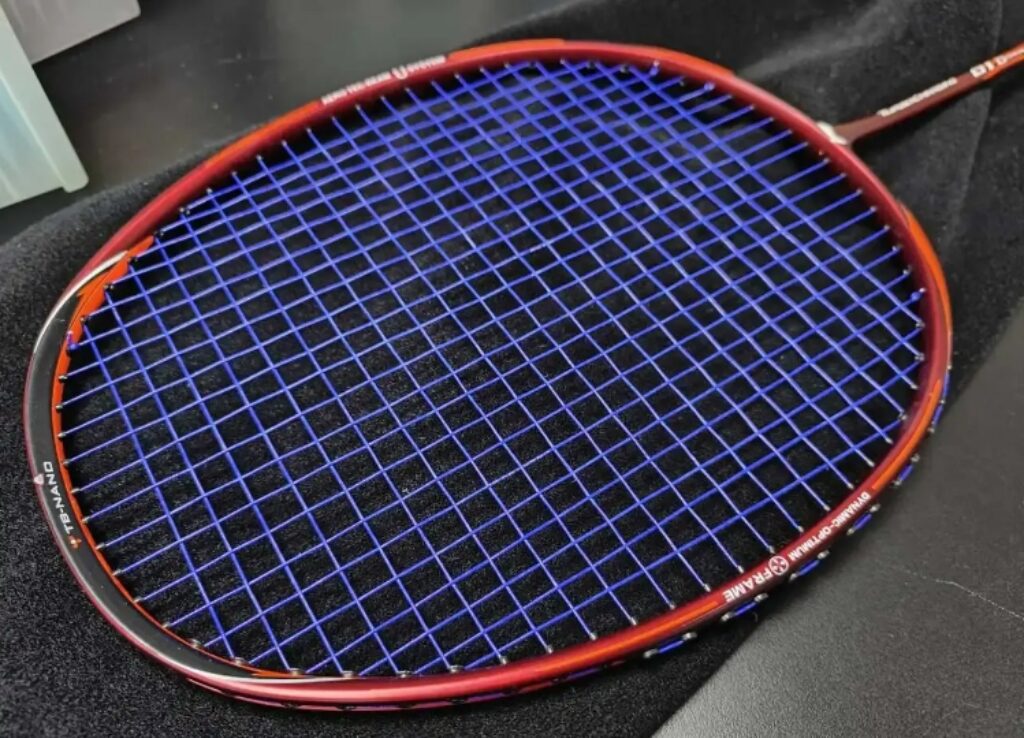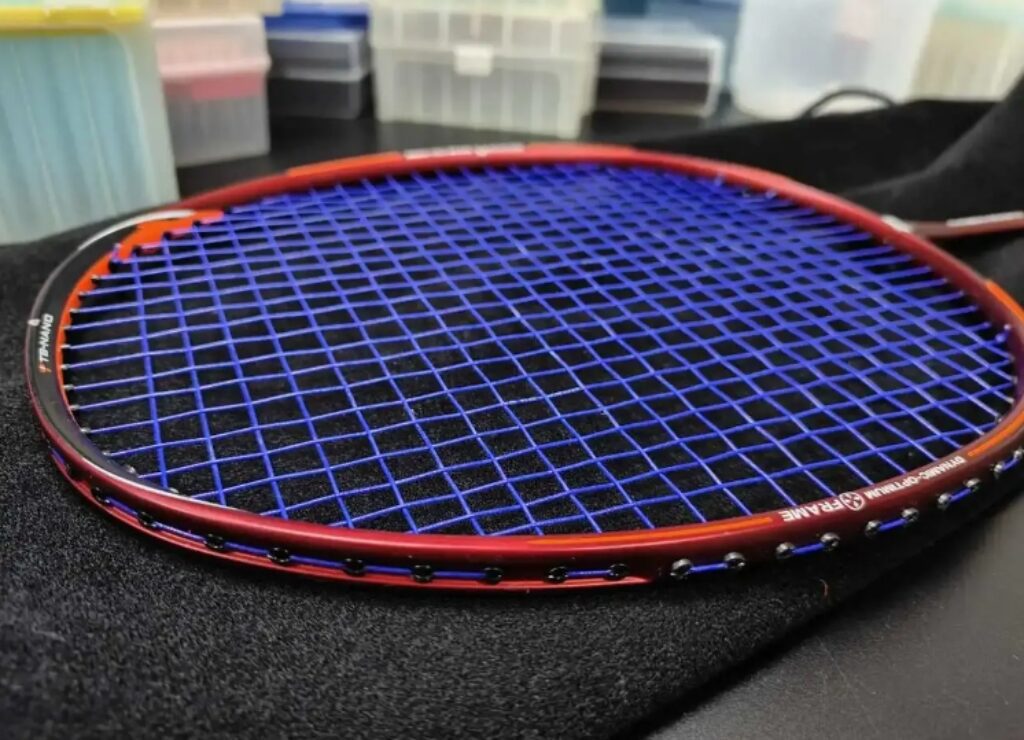This racket was acquired through a trade, and it incorporates many elements that I haven’t encountered before. Firstly, it’s the first D-suffix product from the Red Factory that I’ve tried. Secondly, it’s my first experience with the lower-end Energy series. Finally, it’s also the lowest-cost racket I’ve obtained recently. It indeed brought me a rather fresh experience.
Specifications: 3UG5, no base grip, total weight in use is 91.30g, balance point is 308mm, overall length is 670mm, shaft length is 215mm, hardness is relatively high, Energy wind-breaking frame, 72-hole string bed, 10-2 o’clock string bed, warranty for up to 30 lbs, strung at 25-27 lbs with BG80 strings.
This racket immediately reminded me of the striking Energy 80 in terms of aesthetics—they both feature bright red paint. It’s surprising that the highest and lowest models in the series share the same style. This vibrant design brings a very energetic visual experience. Furthermore, the level of detail is quite consistent with the Wind Blade 001, without cutting corners despite being a lower-end product, something that my previously satisfying Wind Blade 300 series couldn’t offer.

Even though both have the energy-reversing wind-breaking frame, there are still obvious structural differences. The most noticeable change is at the 3-9 o’clock positions, where what was originally an internal-external transition area has been replaced with a longer box-style structure. This instantly reminded me of the Green Factory’s Black Slash model I’ve used recently. It seems that wind-breaking frames are difficult to construct, and with cost limitations, the only way to ensure sufficient frame stability was to increase the box frame structure.
While I don’t mind the slight increase in wind resistance caused by the compromised wind-breaking frame, the swing weight of this racket does indeed further reduce swing speed. The 01D feels noticeably less agile than the N72 with the same specifications. As the swing weight increases, so does the ease of generating power, and with a larger racket face, the tolerance level is effectively guaranteed.

The racket’s elasticity is limited, but Li Ning’s signature “wooden” feedback successfully mitigates the loss of power caused by poor elasticity, resulting in a slightly stiffer real feel and a challenging driving experience. For players with some foundation, the 01D still provides a solid shot feel, allowing them to generate decent power. Sometimes, even hitting simple clears can yield good pressure.
As for offense or downward pressure, the 01D surprisingly meets my expectations. With the current string setup, the smash feel is normal, the shot speed is guaranteed, and it can even handle bursts of power without worrying about the shuttle not dropping. If I had to point out a shortcoming, it would be that the racket face lacks precise directionality, likely due to its limited torsional resistance.

However, this racket is not well-suited for fast-paced exchanges. Despite having a wind-breaking frame, the racket face has a bit of holding sensation, and the higher swing weight limits flexibility, which reduces continuity in flat drives and blocks. On the contrary, the feel of soft touches and gentle drops is quite solid. For a wind-breaking frame racket, it performs better in net play, which is acceptable.
There are also some shortcomings in defense. The most obvious is the lack of clear direction when returning smashes, making it difficult to control the shot’s direction when trying to clear to the backcourt under pressure. Shots can easily go off-target or out of bounds. However, handling passive backhand shots poses no difficulty. I believe it’s more appropriate to view this as an offense-oriented singles racket.

Lately, I’ve also been playing with several of the Red Factory’s entry-level models. Although I’ve mentioned similar points before, it’s worth repeating. Compared to newer generation products, the mid-generation Li Ning mid- to low-end models seem to have more character and better cost-performance ratios, which differs from the Green Factory.
Of course, the Red Factory’s products from that era often have that “wooden” feedback during shots. While it’s not necessarily unpleasant, after playing with it for a while, one may start to grow tired of it.


Leave a Reply